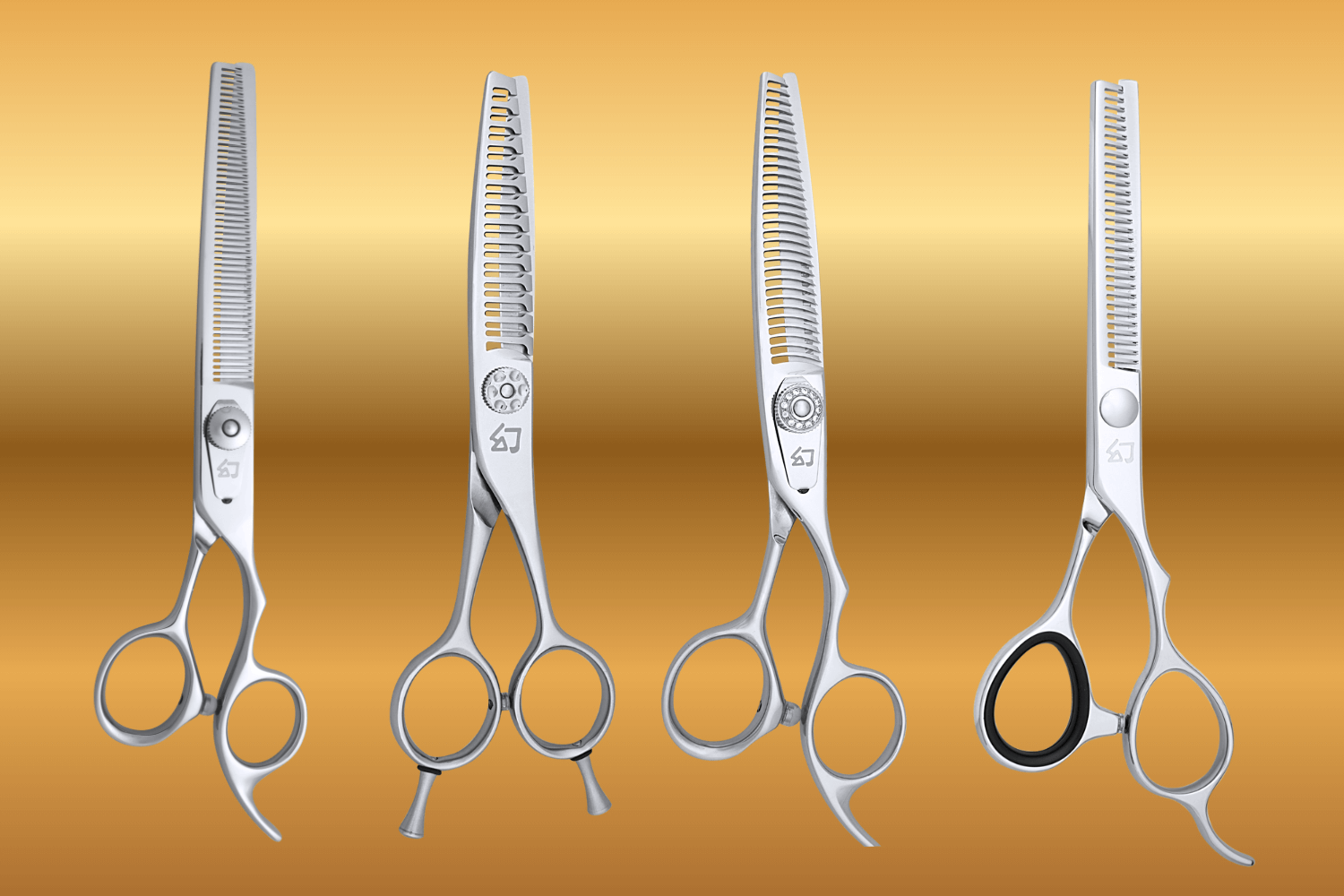Thinning Shears Demystified: How to Choose the Right Pair for Every Client

Thinning shears are essential tools in every professional’s kit—but not all are created equal. Choosing the right thinning scissors can mean the difference between blending with finesse or leaving unwanted lines and gaps.
In this guide, we’ll break down everything professionals need to know about tooth count, blade types, and cutting intent—so you can pick the best thinning scissors for each hair type and style.
What Are Thinning Shears?
Thinning scissors (also called blending or texturizing shears) feature one or both blades with notched teeth. Their primary function is to:
-
Remove bulk
-
Blend lines
-
Add movement and softness
-
Refine finished haircuts
Key Types of Thinning Scissors
1. Single-Sided Thinning Shears
-
One blade has teeth, the other is straight.
-
Ideal for: Softening weight lines, blending layers, and removing volume subtly.
-
Best for: Beginners or standard salon work.
2. Double-Sided Thinning Shears
-
Teeth on both blades.
-
Creates a more diffused cut with less resistance.
-
Best for: Advanced users or curly/thick textures needing even weight removal.
3. Chunking Shears
-
Wider teeth, fewer notches (6–12 teeth).
-
Removes significant bulk with each cut.
-
Best for: Thick, coarse, or curly hair; rapid debulking.
4. Finishing/Texturizing Shears
-
Higher tooth count (30–40+).
-
Very fine blending, minimal hair removal.
-
Best for: Polishing and finishing on fine to medium hair.
How to Choose Based on Tooth Count
| Tooth Count | Effect | Best Use |
|---|---|---|
| 6–12 | Heavy removal (chunking) | Thick or curly hair |
| 20–30 | Balanced thinning/blending | Medium textures, everyday use |
| 30–40+ | Soft finishing, texturizing | Fine hair or final detailing |
What to Consider When Choosing Thinning Scissors
1. Hair Type & Texture
-
Fine hair? Use higher tooth count for soft blending.
-
Thick/coarse hair? Go for chunking or medium tooth count shears.
2. Desired Result
-
Want to soften lines? Use 30+ teeth.
-
Need to remove bulk? Use fewer, wider teeth.
-
Need precision? Use high-quality convex edge blades for smoother results.
3. Handle Design
-
Offset or swivel handles help reduce wrist strain during repetitive motion.
-
Choose ergonomics that support your cutting posture, especially for blending work.
4. Blade Quality
-
Japanese steel is highly recommended for smooth, sharp, and lasting cuts.
-
Look for convex edges for clean shearing without snagging.
Pro Tips for Using Thinning Shears
-
Never use thinning shears too close to the roots—start at mid-shaft or ends.
-
Always cut on dry or slightly damp hair to assess natural texture.
-
Use comb control and visual checks frequently to avoid over-thinning.
-
Always test new shears on a practice section before using on a client.
Maintenance Tip
Thinning shears need the same care as your cutting scissors:
-
Clean and oil after each use
-
Store in a protective case
-
Get professionally sharpened (do not DIY)
-
Check tension frequently










